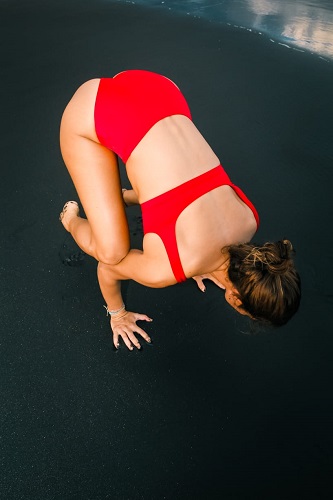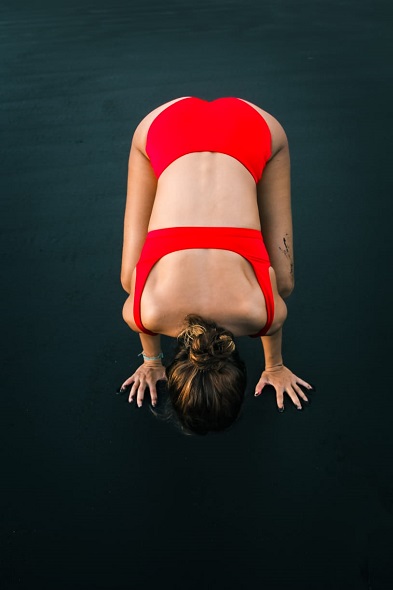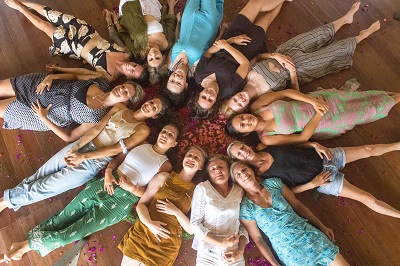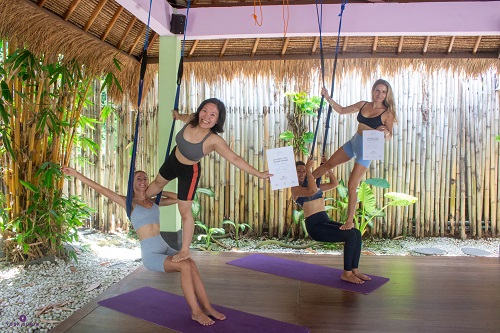I explain how to do kakasana and bakasana. Both are balance poses, where we make contact with the ground through our hands. They function as roots of our body, being the only point of contact with the ground.
These are two poses, and not variants of it.
Bakasana is also known by the name of Crane, since in Sanskrit “Baka” means crane.
“Kaka” in Sanskrit means crow, which is why Kakasana is called the crow pose.
Asana means posture in Sanskrit, reaffirming the separation between the two. They are two independent positions.
The key to both is the alignment and activation of the Bandhas, focusing on the arms, abdomen, and pelvis.


Kakasana or crow pose
HOW TO DO KAKASANA
It is generally learned before Bakasana, as it is a bit simpler to perform.
Steps:
- From Malasana (garland pose) and with the elbows bent, support the palms of the hands, separating the fingers.
- With your elbows in line with your wrist, slowly raise your hips, always keeping your balance.
- The knees approach the elbow on the outside, making contact and thus protecting this joint.
- Rock forward without lifting your feet.
Slowly lift your feet one by one. Once they are elevated, try to bring the balls of your feet together. - The gaze goes forward all the time and the spine is stretched. This will help balance.
Bakasana or crane pose
It is a slightly more advanced pose, as it requires more strength in the arms.
Steps:
- Starting in a standing position, place your hands on the floor with your fingers spread apart, aligning with your shoulders.
- Squatting and supporting the tips of the feet, bring them closer to the body, bringing the knees closer to the armpits.
- Your elbows should be in line with your wrists, with your arms bent.
- Slowly raise the feet one by one, bringing them closer to the gluteus and placing the knees on the triceps.
- You can start by lifting only one foot, looking for balance and if it feels good, lift the other.
- Once this is accomplished, you can put the balls of your feet together and stretch out your arms.
- The gaze goes forward all the time and the spine is stretched. This will help balance.
I always recommend performing these postures, at least at the beginning, under the supervision of Yoga professionals. Do not hesitate to contact me.


